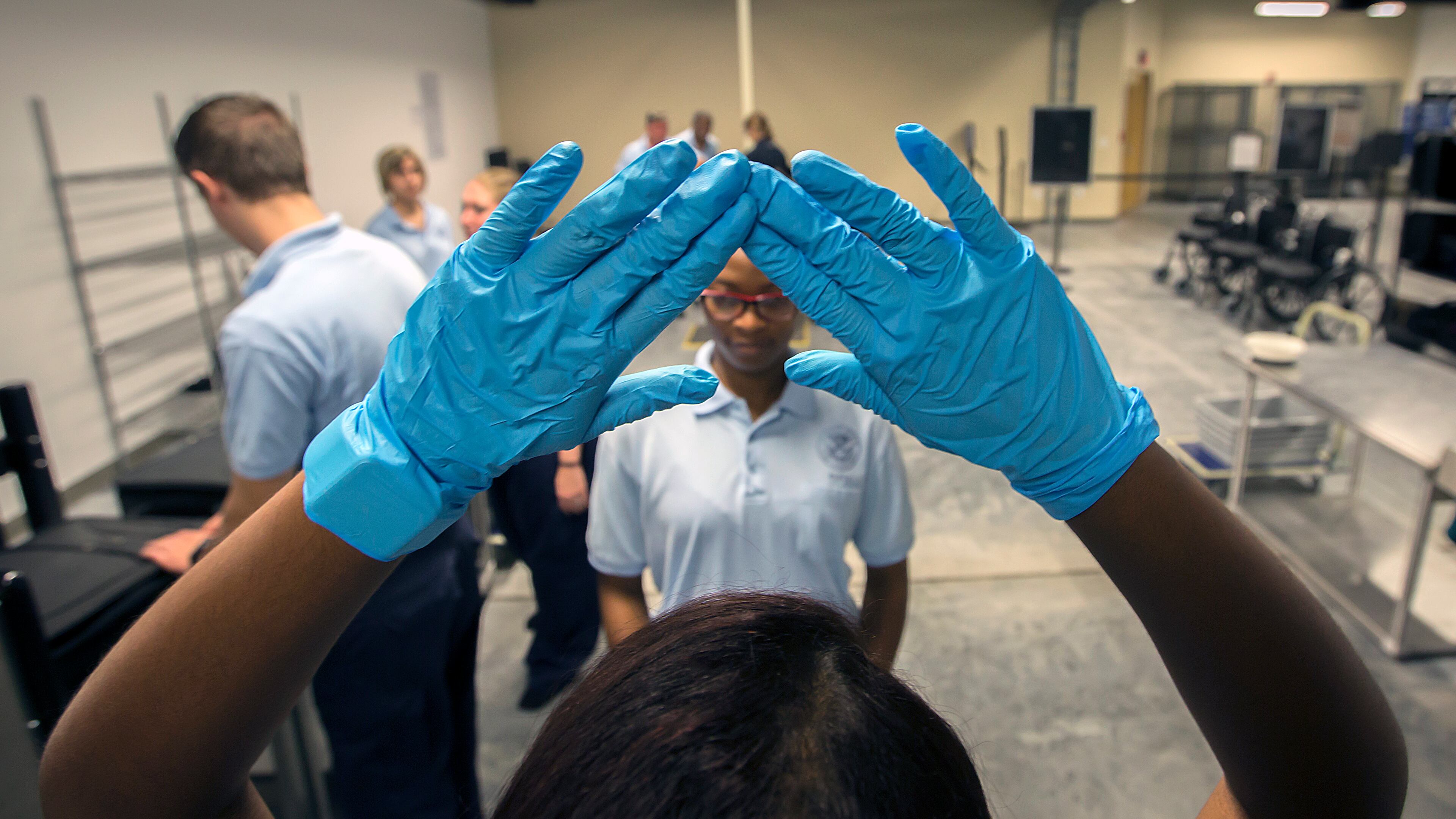GAO recommends TSA set goals for training at Glynco, Ga. academy

The Transportation Security Administration should set goals and performance measures for the training of all newly-hired officers at an academy in Glynco, Ga., the U.S. Government Accountability Office recommended in a new report.
TSA centralized training of all of its new officers at the Federal Law Enforcement Training Center in Glynco, near Brunswick, in 2016.
The move to a centralized "Basic Training" program at one location required before TSA officers deploy to airports around the country came after TSA was criticized for frequent failures to detect mock explosives and weapons during tests.
Before the shift, new hires were trained at their local airports.
The two weeks of training in Glynco includes classroom instruction, training on prohibited items and recognizing improved explosive devices, an unclassified intelligence briefing on current threats to aviation security and a simulated active shooter scenario at a checkpoint.
GAO said in the report released Thursday that the basic training, which costs an average of $2,300 per student, “serves as the foundation” for officers to learn skills and procedures “and it is important to establish goals and measures to better assess the effectiveness of the training they receive.” That would help the agency determine how well officers fulfill their role of ensuring airline passenger safety, according to the congressional watchdog.
To date, more than $50 million has been obligated to set up and operate TSA officer basic training, according to the GAO report.
TSA expected that the centralized training would improve employee morale, but there are no goals or metrics related to that benefit, according to the GAO report. The agency could conduct exams on X-ray image interpretation and conduct surveys to gauge employee morale, GAO said.
Jim Crumpacker of the Department of Homeland Security, which includes TSA, agreed with the recommendation.
He wrote in a memo responding to GAO that by Oct. 31, TSA will conduct assessments during the training and surveys afterward.
The centralized academy makes it easier to respond to evolving threats with new training, Crumpacker wrote, adding that “an academy setting encourages the development of camaraderie and esprit de corps in new employees, resulting in an increased sense of belonging with greater employee satisfaction and improved performance.”

